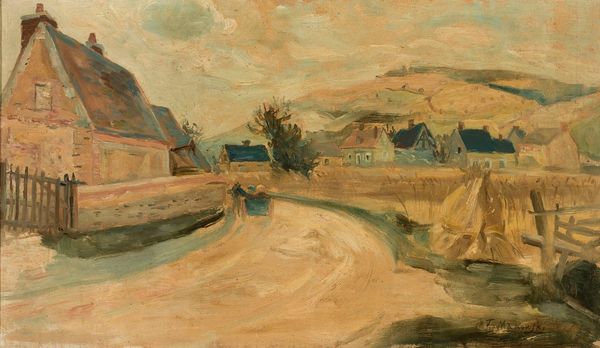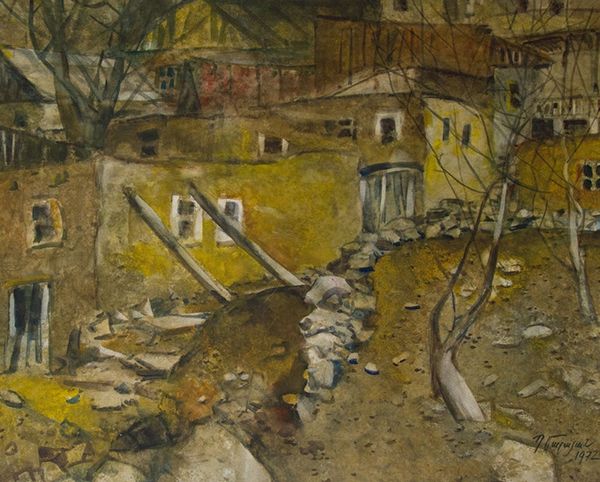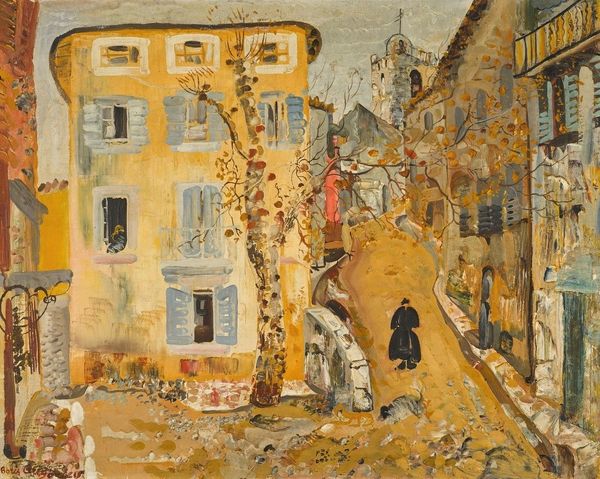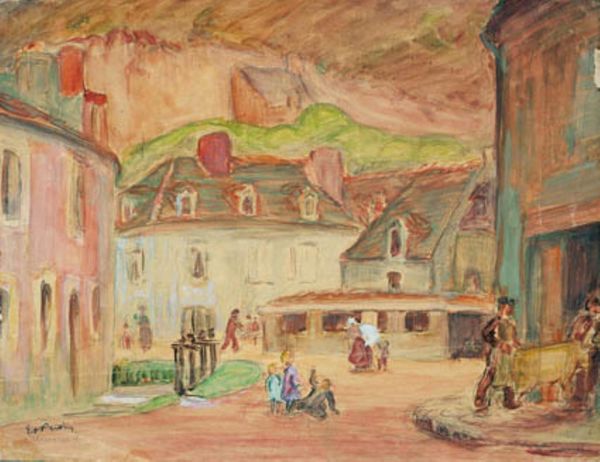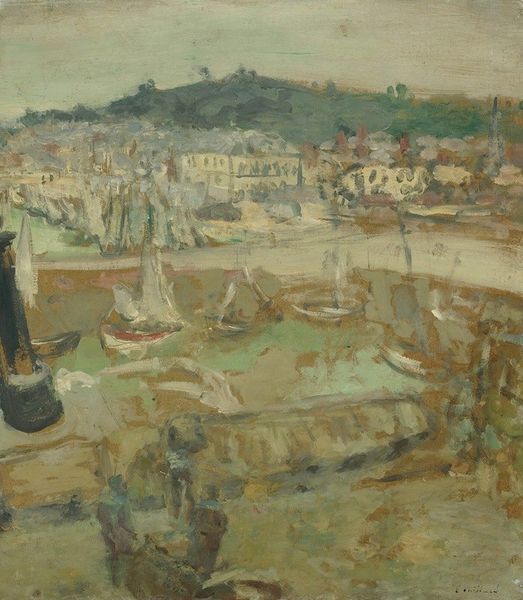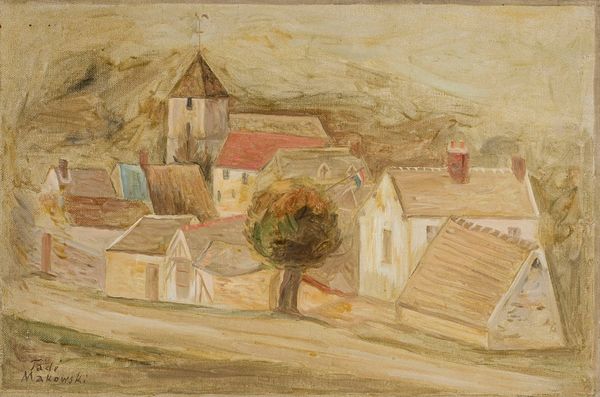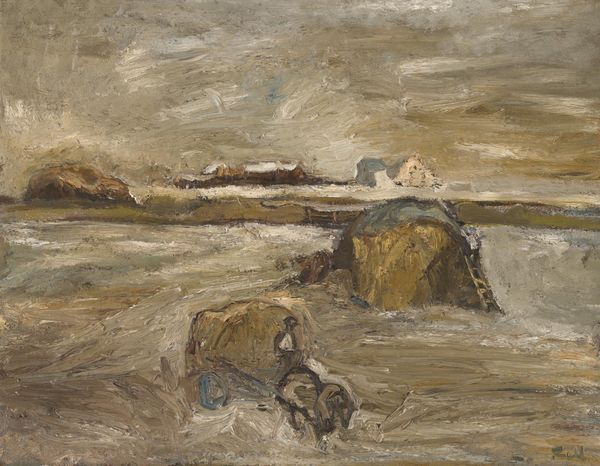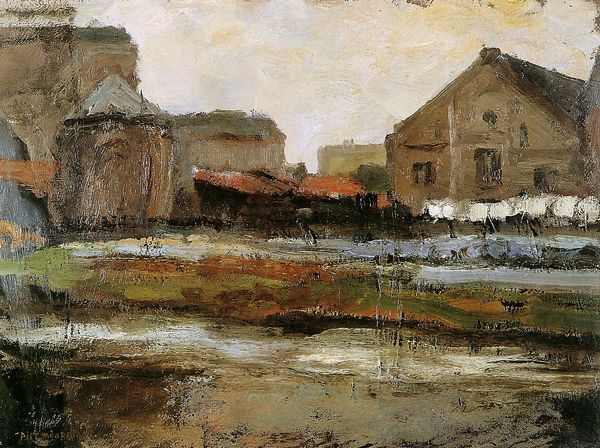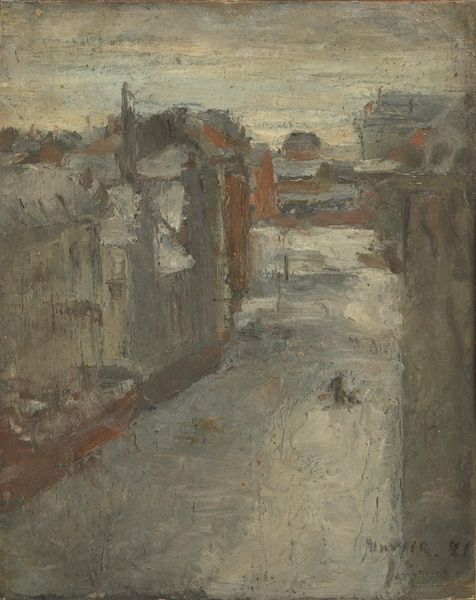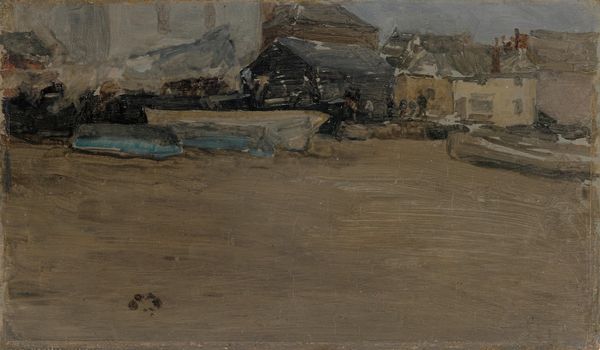
Copyright: Public Domain: Artvee
Curator: This is "Breton Landscape with Seated Man" painted by Tadeusz Makowski in 1924. The artist chose oil on canvas for this piece. Editor: My first thought? Quiet desolation. The color palette feels like a faded photograph, and that lone figure intensifies the feeling of solitude. Curator: It is striking. Makowski painted this during a time when Brittany, with its rich cultural heritage, was becoming increasingly commodified through tourism. The solitary figure perhaps becomes a symbolic nod to traditional ways of life being gradually overwhelmed. It connects to debates around cultural preservation, authenticity, and who has the right to represent a place. Editor: Absolutely, I think considering that broader societal shift, that man sitting there transcends the individual to represent an identity wrestling with place and time. Looking at it now, I am more curious as to what message, resistance, acceptance, or even something lost in translation Makowski wanted to project. Curator: It is very thought-provoking, the subtle tones amplify this sense of quiet resilience as opposed to outright conflict or protest, right? Makowski had connections to Post-Impressionism which was all about that highly subjective take on perception, but he merges this almost pastoral romantic view to reflect those evolving socio-political landscapes, even including the individual, his actions or role in that development. Editor: I also want to talk about the technique because those short brushstrokes, almost dry, feel as weathered as the stone walls depicted. It shows a reality—perhaps less idyllic, or maybe more sincere. A counterpoint to how Breton landscapes are often sentimentalized? Curator: I think your insight makes clear what it is about art that still matters today, offering unique perspectives to social truths. Editor: Indeed, reflecting and shaping those social dialogues within and surrounding society. Thank you.
Comments
No comments
Be the first to comment and join the conversation on the ultimate creative platform.
